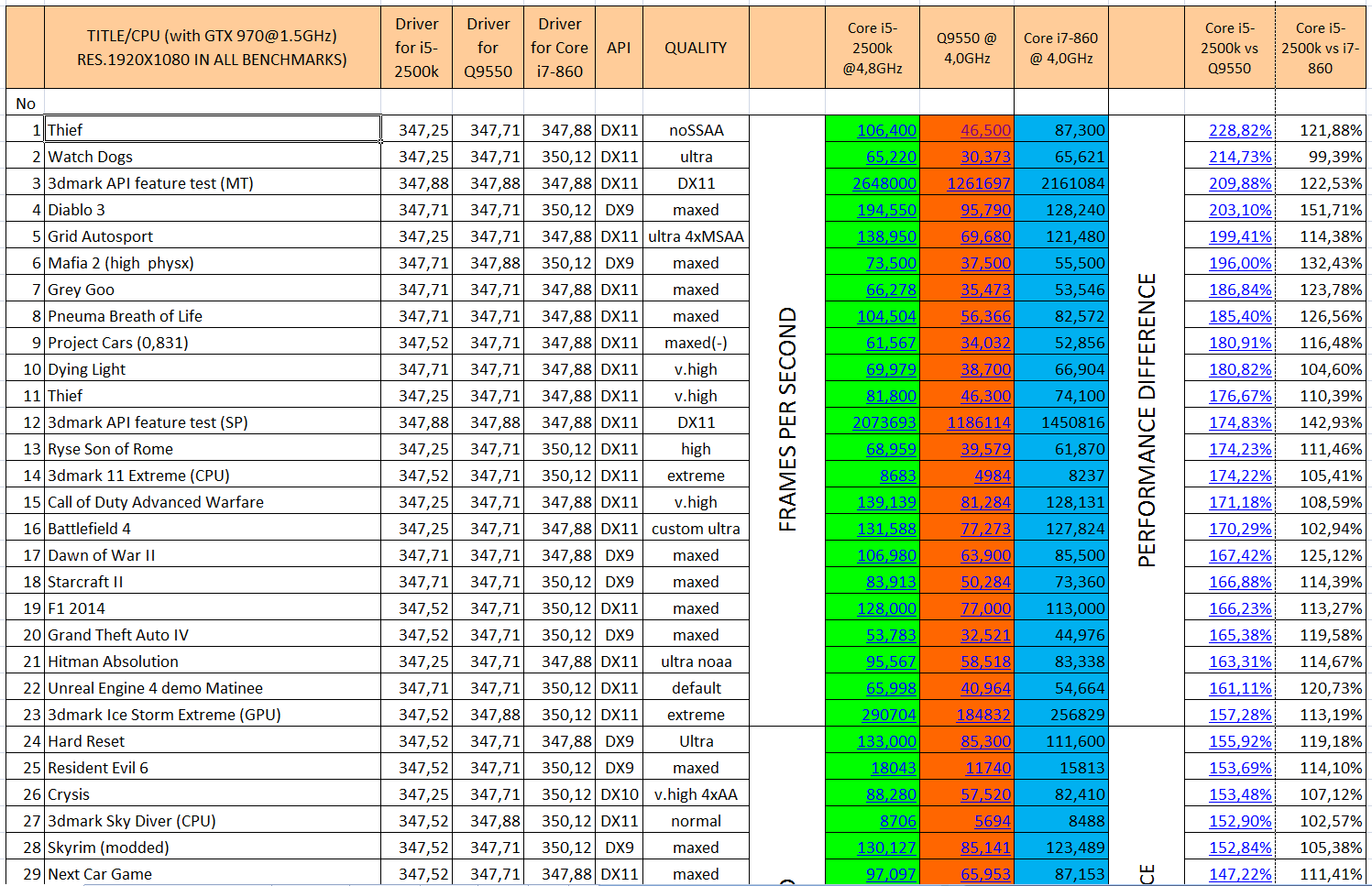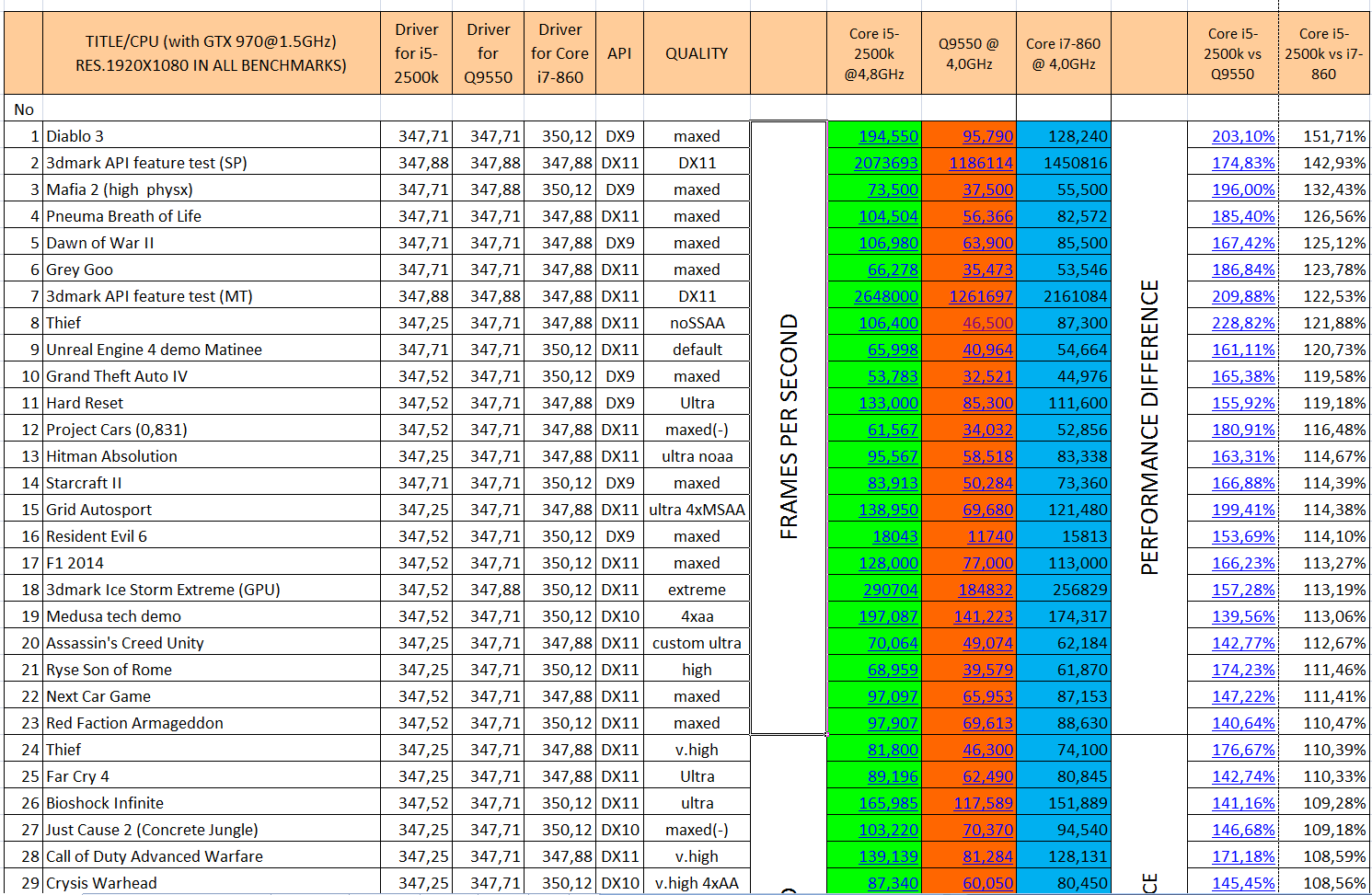Hello my friends. Thank you for you comments again.

Since I have had some requests to post some i7-860 results already, here is the sum up of the 2500k, Q9550 and Core i7-860, on the most cpu limited benchmarks of the original benchmark suite.
Here is the list sorted by the 2500k vs Q9550 delta, from highest to lowest


and here are the same results, sorted by the 2500k vs core i7-860 delta, from highest to lowest.


As you can see, the 2500k/Q9550 delta dropped from 63% to only 13% for the 2500k/i7-860 comparison.
The clock difference of the 2500k@4.8Ghz and the i7-860@4.0Ghz is 4.8/4=20%, so for 20% more clock we only have 13% more performance. Of course this is due to the fact that this whole benchmark suite, is primarily designed to be GPU limited, with real life, very high settings, hence we have many GPU limits in all runs.
At this point, I believe it would be interesting to redo every 2500k benchmark that has a delta of 20% or more compared to the 860, which would correspond to the operating frequency difference of the two cpus, but this time clocked at 4Ghz, as the i7-860 is.
To stretch things even more, I could also disable the HyperThreading of the i7-860 for another run of these above 20% deltas, so we can see what a Lynnfield can do without the help of hyperthreading, but this is a story for another time I guess!
Of course I will come back to post the complete version of this test, with graphs, bbcode with video links etc.





